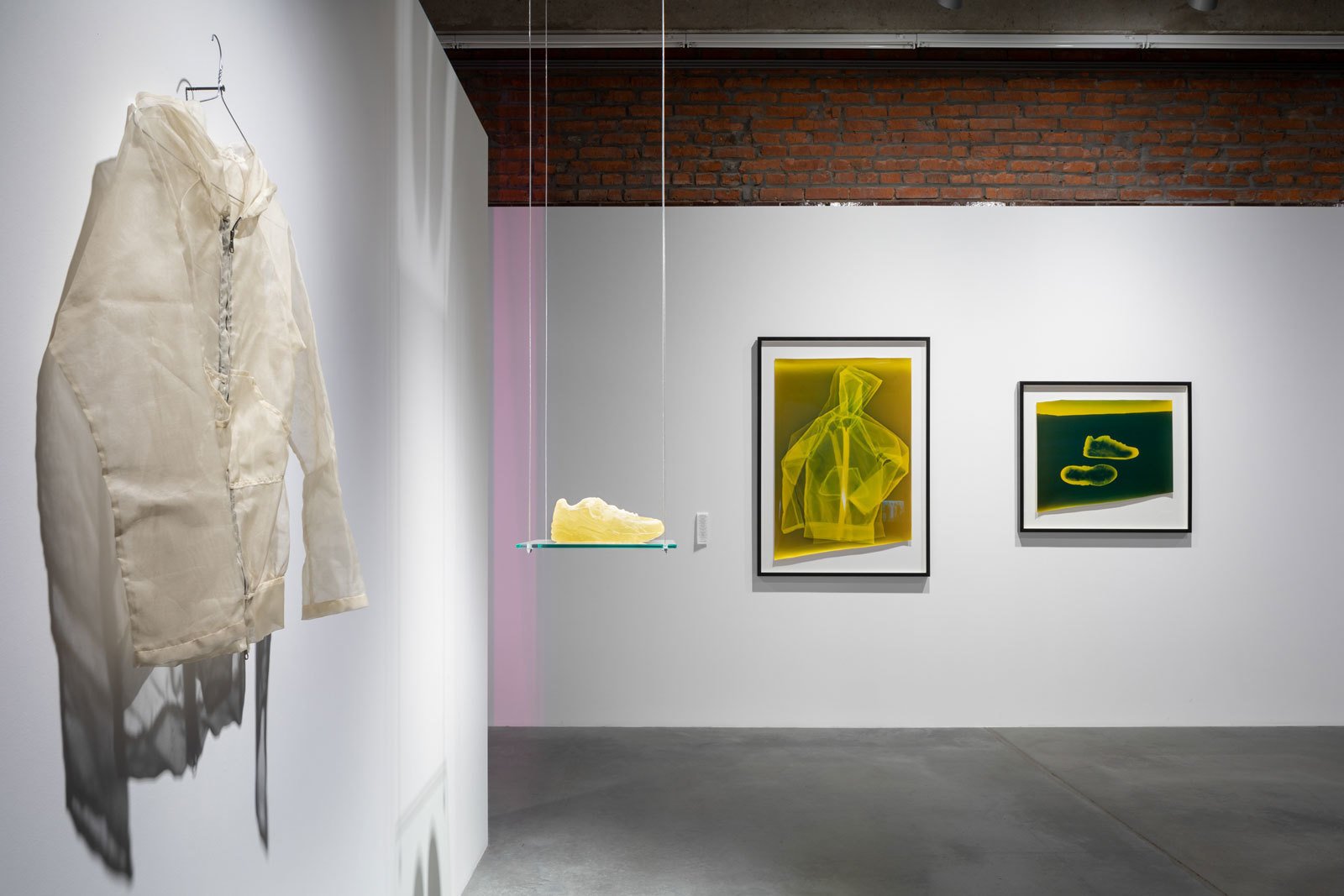Farrah Karapetian
(b. 1978, Marin, USA; lives and works in Los Angeles)

Accessory to Protest: Hoodie Negative, 2011
Unique constructed negative: organza, metal zipper, size Small, 119 x 76 cm
Accessory to Protest: Sneaker Negative, 2011
Unique constructed negative, resin, size 11
30.48 x 12.7 x 12.7 cm
Accessory to Protest: Hoodie (Yellow), 2011
Unique chromogenic photogram, 114.3 x 81.28 cm
Accessory to Protest 8: Yellow Sneakers, 2011
Unique chromogenic photogram, 60.96 x 76.32 cm
Accessory to Protest: Flyer Photograph, 2011
Unique silver gelatin photograms from constructed negatives and performance,
243.84 x 203.2 cm each
Courtesy of the artist and Von Lintel Gallery, Los Angeles
The photogram has a glorious history: Man Ray, László Moholy-Nagy, and other avant-garde pioneers experimented with the projection of light directly onto physical objects placed on photographic paper. American artist Farrah Karapetian turns objects related to such domains of the invisible as sound and anonymity into transparent shells of silicone, ice, organza, and other materials, and then proceeds to create photograms. In the series of photograms and “sculptural negatives” entitled Protest Accessories, Karapetian is inspired by the dress codes of activists who aim to overthrow the existing order, in this case those who protested Egyptian President Hosni Mubarak during the Arab Spring. The photograms reproduce—and significantly magnify—a brochure instructing demonstrators how to dress so that the police do not recognize them on video. Two “sculptural negatives” transform clothing from this brochure into an ideal uniform of invisibility, a pure political force without identificatory attributes such as sex and age.